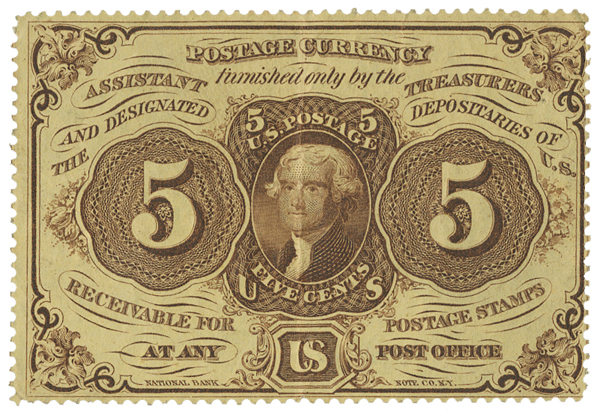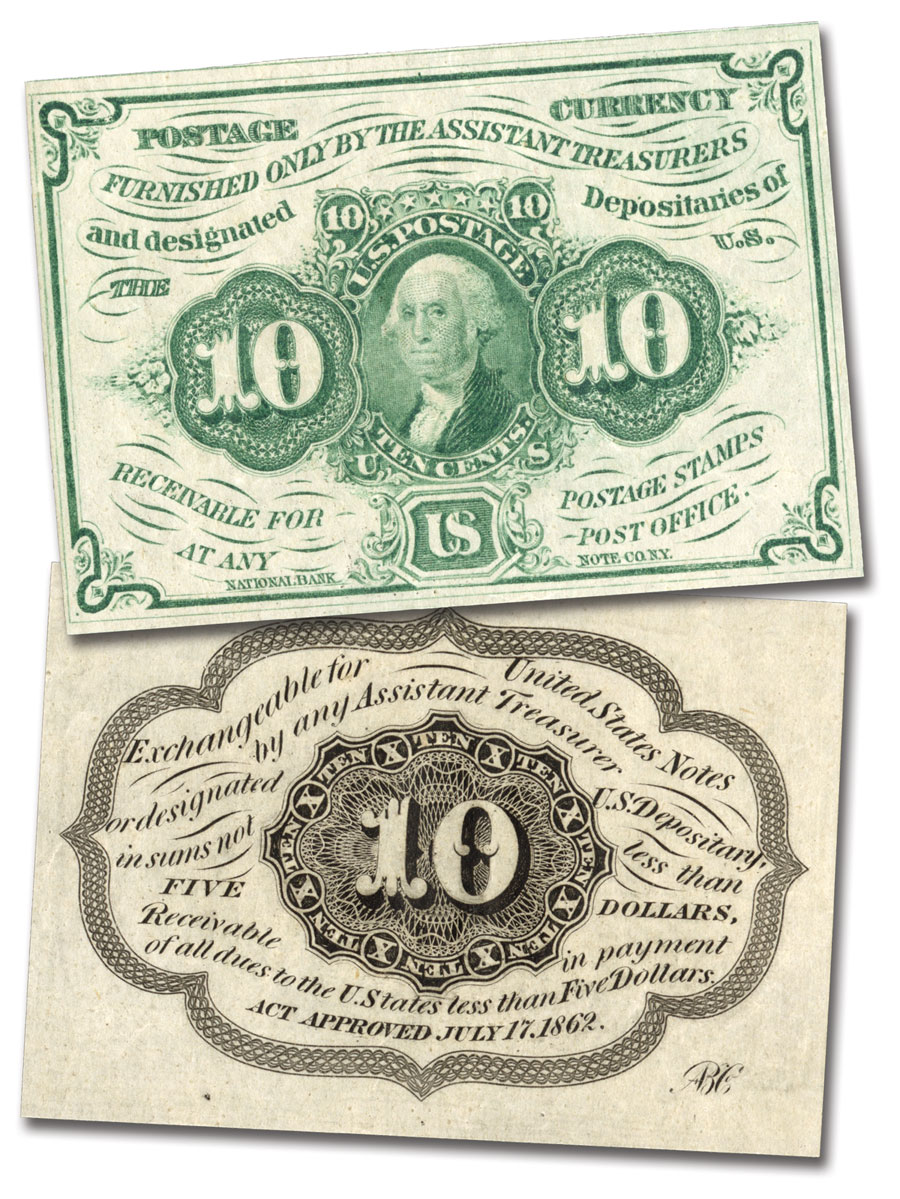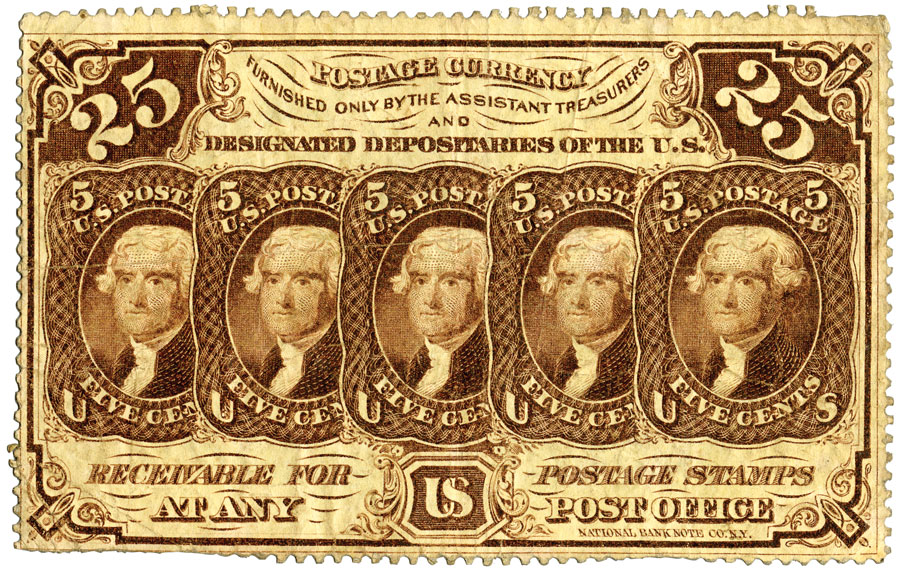
# PC6 - 1862 10c Bust of Washington on 10c Stamp
Fractional or postage currency has a rich history. At the beginning of the Civil War people starting hoarding coins for their precious metal content. Coins became difficult to find because of the hoarding. People started to try to use stamps instead of coins as a means of commerce. The government decided to help ease the hoarding issue by issuing “paper coins” also known as postage currency or fractional currency. Fractional currency was first issued on August 21, 1862 and they were last issued on February 15, 1876. Three cents, five cents, ten cents, twenty-five cents, and fifty cents notes were all issued. Fractional currency is physically smaller than other United States money. It also does not have a serial number.
Postage Currency

On August 21, 1862, Postage Currency was issued to make business transactions easier during the Civil War.
In 1861, the United States began printing paper notes to finance its Civil War operations. Since the backs of the notes were printed in green, they were commonly referred to as “greenbacks.” At first, the notes were redeemable in coins, but as the war raged on, they became merely promises of the U.S. government to pay. Since the notes had no metal money behind them as security, people began to hoard their gold and silver coins.

By 1862, greenbacks were being used more frequently, as coins disappeared from circulation. Eventually, small change vanished completely, and greenbacks were the only currency being used. Since much of what people needed cost less than a dollar, they found themselves faced with an unusual dilemma: how to pay for things without using their precious coins. Soon people were buying a dollar’s worth of stamps and using them as change instead. But the resulting wear and tear made it difficult for postal clerks to tell unused stamps from those that had been washed for reuse.

This led to the creation of postage currency, which was approved by Congress on July 17, 1862. The first postage currency was issued a month later, on August 21, 1862. As a substitute for small change, U.S. Treasurer Francis Spinner began affixing stamps, singly and in multiples, to Treasury Paper. Although this was not considered actual money, it made stamps negotiable as currency. Eventually, the Treasury began printing the stamp designs on the paper, rather than using the stamps themselves. Postage currency remained in use until 1876, when Congress authorized the minting of silver coins.
Fractional or postage currency has a rich history. At the beginning of the Civil War people starting hoarding coins for their precious metal content. Coins became difficult to find because of the hoarding. People started to try to use stamps instead of coins as a means of commerce. The government decided to help ease the hoarding issue by issuing “paper coins” also known as postage currency or fractional currency. Fractional currency was first issued on August 21, 1862 and they were last issued on February 15, 1876. Three cents, five cents, ten cents, twenty-five cents, and fifty cents notes were all issued. Fractional currency is physically smaller than other United States money. It also does not have a serial number.
Postage Currency

On August 21, 1862, Postage Currency was issued to make business transactions easier during the Civil War.
In 1861, the United States began printing paper notes to finance its Civil War operations. Since the backs of the notes were printed in green, they were commonly referred to as “greenbacks.” At first, the notes were redeemable in coins, but as the war raged on, they became merely promises of the U.S. government to pay. Since the notes had no metal money behind them as security, people began to hoard their gold and silver coins.

By 1862, greenbacks were being used more frequently, as coins disappeared from circulation. Eventually, small change vanished completely, and greenbacks were the only currency being used. Since much of what people needed cost less than a dollar, they found themselves faced with an unusual dilemma: how to pay for things without using their precious coins. Soon people were buying a dollar’s worth of stamps and using them as change instead. But the resulting wear and tear made it difficult for postal clerks to tell unused stamps from those that had been washed for reuse.

This led to the creation of postage currency, which was approved by Congress on July 17, 1862. The first postage currency was issued a month later, on August 21, 1862. As a substitute for small change, U.S. Treasurer Francis Spinner began affixing stamps, singly and in multiples, to Treasury Paper. Although this was not considered actual money, it made stamps negotiable as currency. Eventually, the Treasury began printing the stamp designs on the paper, rather than using the stamps themselves. Postage currency remained in use until 1876, when Congress authorized the minting of silver coins.







